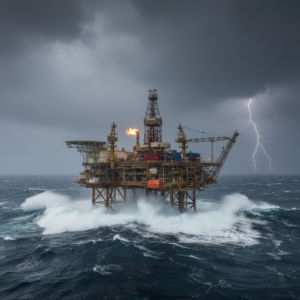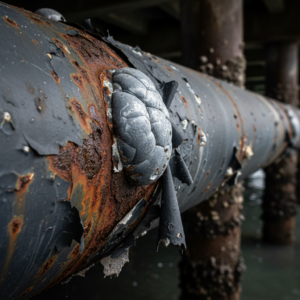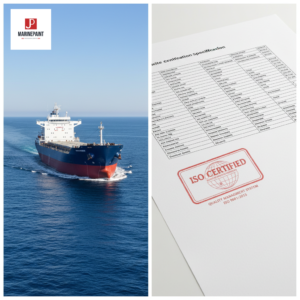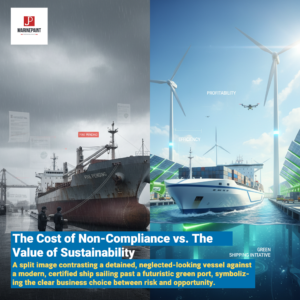The Critical Role of a Quality Marine Paint Supplier
Struggling to find reliable marine paint suppliers in China? Choosing the right partner is critical for your vessel's protection and performance, ensuring longevity and saving on long-term maintenance costs.
This guide will help you navigate the top marine paint suppliers in China, focusing on those offering the best quality products and comprehensive service. We'll explore key players, including our own JDmarine Paint, and provide insights into selecting a supplier that meets your specific maritime needs. You'll learn what to look for in terms of product range, technical support, and overall value, ensuring your vessel receives the optimal coating solution for lasting protection against harsh marine environments.
![[Image Placeholder: Diverse array of marine paint cans or a ship being professionally painted] [Image Placeholder: Diverse array of marine paint cans or a ship being professionally painted]](https://jdmarinepaint.com/wp-content/uploads/2025/06/this-guide-will-help-you-navigate-the-top-marine-p-1.png)
Selecting the right marine paint supplier is more than just a transaction; it's a partnership crucial for the lifespan and efficiency of your maritime assets. Let's delve into why this choice is so vital and how to identify the best partners in the Chinese market.
Why Your Choice of Marine Paint Supplier Matters More Than You Think?
Problem: Many vessel owners underestimate the impact of their marine paint supplier. A poor choice can lead to premature coating failure, increased maintenance, and higher operational costs. It’s not just about the paint; it’s about the expertise, support, and reliability behind it.
Agitate: Imagine dealing with a supplier who offers limited product knowledge, poor technical support, or inconsistent quality. This can result in using the wrong type of paint for your vessel’s specific needs or operating environment, leading to issues like rapid fouling, corrosion, or delamination. The consequences can be significant, from decreased fuel efficiency to expensive dry-docking and repairs, ultimately affecting your bottom line and vessel availability.
Solution: Partnering with a reputable marine paint supplier ensures you receive high-quality, durable coatings tailored to your vessel's requirements. A good supplier provides expert advice, comprehensive technical support from surface preparation to application, and a reliable supply chain. They understand the challenges of the marine environment and offer solutions that protect your investment, enhance performance, and ensure compliance with environmental regulations. This strategic choice translates into long-term savings and peace of mind.
Choosing a top-tier marine paint supplier like JDmarine Paint means investing in the longevity and operational efficiency of your vessel. These suppliers offer a wide range of specialized coatings designed for various applications and environments. They act as marine paint specialists, providing not just products but also invaluable product knowledge and customer service. A reliable supplier understands the critical role of marine coatings in preventing marine growth, stopping corrosion, and protecting against UV damage and saltwater intrusion, ultimately helping to extend vessel life and improve fuel efficiency. They can guide you on everything from selecting the right antifouling paint or epoxy primer to proper paint application techniques.
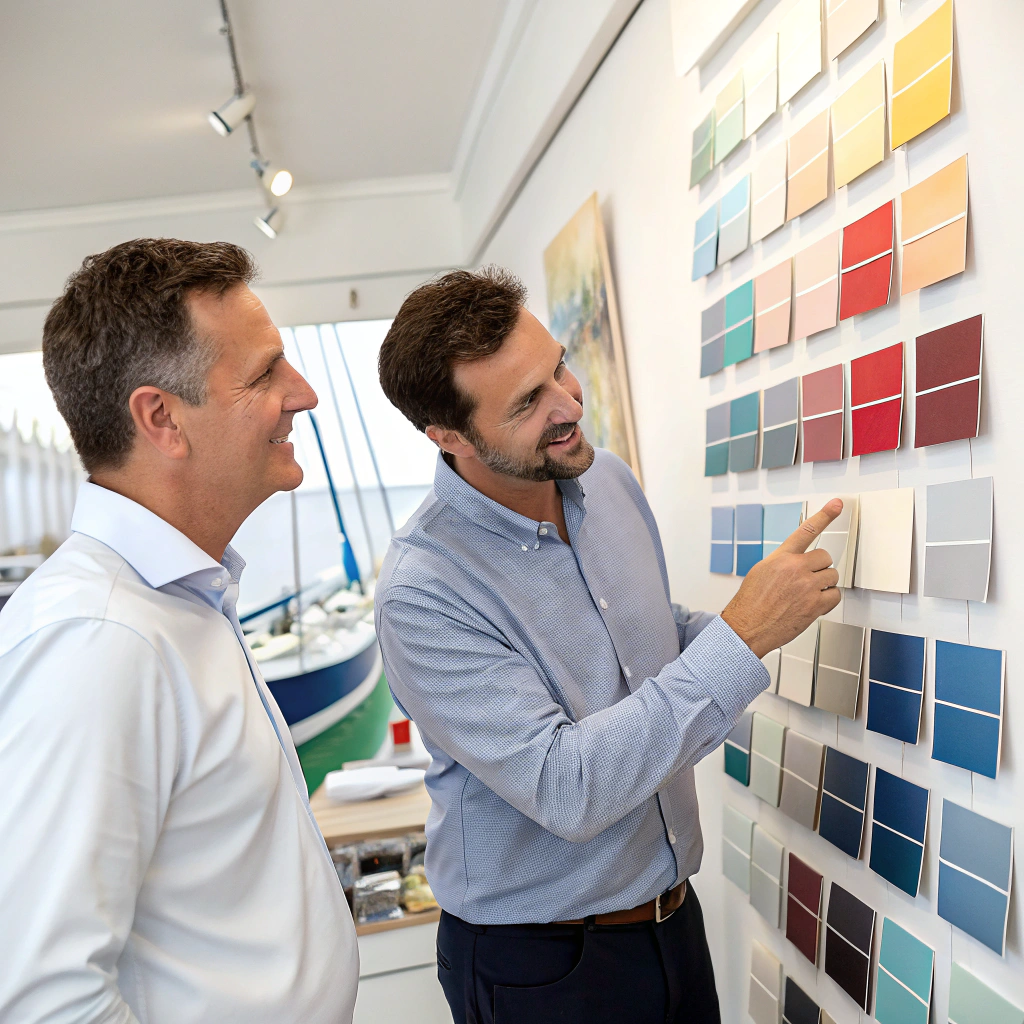
The Ripple Effect of Supplier Choice
A good marine paint supplier offers more than just cans of paint; they provide a comprehensive solution. This includes:
- Product Quality and Range: Access to a wide variety of high-performance marine coatings, including specialized options like low-VOC marine paint or eco-friendly marine coatings.
- Technical Expertise: Guidance on selecting the right paint system for different parts of your vessel (hull, deck, superstructure, underwater parts) and specific vessel types (fiberglass boats, aluminum boats, steel hulls).
- Support and Service: Assistance with surface preparation, paint application methods, and troubleshooting. This is where a marine paint specialist truly shines.
- Regulatory Compliance: Ensuring products meet current environmental regulations for marine coatings, such as those outlined in International Maritime Organization (IMO) guidelines.
- Reliability and Consistency: Dependable delivery schedules and consistent product quality, crucial for boat maintenance and dry-docking timelines.
Consider JDmarine Paint, for example. We don't just sell paint; we offer a partnership. Our technical consultants work with you to understand your vessel's unique operational profile and environmental challenges. We might recommend our robust JDH06-4 Epoxy Zinc-Rich Anti-Rust Primer for superior corrosion protection on steel hulls, followed by a durable topcoat like JD918 Acrylic Polyurethane Hull Paint (Yellowing resistance) [5] for excellent gloss retention and UV resistance. This holistic approach ensures you get the most out of your paint investment.
Consequences of a Poor Supplier Choice
Conversely, a less-than-ideal supplier can lead to:
| Issue | Consequence |
|---|---|
| Inferior Product Quality | Premature paint failure, increased fouling, corrosion |
| Lack of Technical Support | Incorrect paint selection or application, leading to reduced coating lifespan |
| Limited Product Range | Inability to find optimal solutions for specific needs or environmental concerns |
| Poor Customer Service | Delays, incorrect orders, difficulty resolving issues |
| Non-Compliance with Regs. | Potential fines or operational restrictions |
Choosing a vessel paint distributor or marine finishes vendor is a critical decision that impacts your vessel’s performance, maintenance schedule, and overall operational costs.
Understanding the Spectrum: Types of Marine Paints Offered by Leading Suppliers?
Problem: The sheer variety of marine paints can be overwhelming. Antifouling, epoxy, polyurethane, alkyd – what’s the difference, and which one does your vessel truly need? Choosing incorrectly can lead to suboptimal protection and wasted resources.
Agitate: Using a topside paint for underwater application or an incompatible primer can result in catastrophic coating failure. This means more frequent and costly reapplications, increased drag due to fouling (leading to higher fuel consumption), and potentially severe corrosion damage that compromises the structural integrity of your vessel. The marine environment is unforgiving, and the wrong paint choice provides a fast track to problems.
Solution: Leading marine paint suppliers offer a comprehensive spectrum of coatings, each formulated for specific purposes and vessel areas. Understanding these types allows you to make informed decisions. For example, antifouling paints prevent marine growth on the hull, epoxy primers provide a strong, corrosion-resistant base, polyurethane topcoats offer durability and gloss, and alkyd enamels can be excellent for general-purpose applications. A knowledgeable supplier will guide you through these options to ensure optimal protection and performance.
Marine paint suppliers typically categorize their offerings based on the paint's chemical composition and its intended application area on a vessel. The main types include:
- Antifouling Paints (Bottom Paints): These are critical for underwater parts of the hull to prevent marine growth (barnacles, algae, slime). Effective antifouling paint, like our JD753 Tin-free self-polishing antifouling paint [2] or the economical JD713 Chlorinated Rubber Antifouling Paint [2] ([4]), significantly improves fuel efficiency and speed. Options include ablative (self-polishing) paints, hard bottom paints, and increasingly, copper-free antifouling and other eco-friendly marine coatings to comply with environmental regulations.
- Primers (Epoxy Primers, Alkyd Primers): Applied directly to the prepared surface (steel, aluminum, fiberglass, wood), primers ensure strong paint adhesion and provide a foundational layer of corrosion protection. Epoxy primers, such as JDH815 Iron Oxide Red Epoxy Primer [1] ([8]) or JDH819 Epoxy Zinc Phosphate Primer [12] ([17]), are known for their exceptional adhesion, toughness, and resistance to water and chemicals. For general purposes, an alkyd anti-rust paint like JDC53-31 Red Lead Alkyd Anti-Rust Paint [1] ([9]) can be suitable.
- Topcoats (Polyurethane Paints, Alkyd Enamels, Acrylics): These are the visible layers that provide color, gloss, and protection against UV radiation, abrasion, and weather. Polyurethane paints, such as JD908 Acrylic Polyurethane Topcoat Non-Yellowing Resistant [5] ([11]), offer superior durability, gloss retention, and chemical resistance, making them ideal for topsides, decks, and superstructures. Alkyd enamels, like JDC43-31 Alkyd Hull Paint [2] ([5], [15]), are easier to apply and provide good performance for general use. For high-end applications demanding extreme durability, a JDFT810 Fluorocarbon Topcoat [2] ([28]) might be recommended by top marine paint companies.
- Specialty Coatings: This category includes marine varnish for wood protection, non-skid deck paint for safety, bilge paint for engine rooms, and tank coatings like JDH912 Epoxy Potable Water Tank Coating [2] ([26]) for specific internal applications.
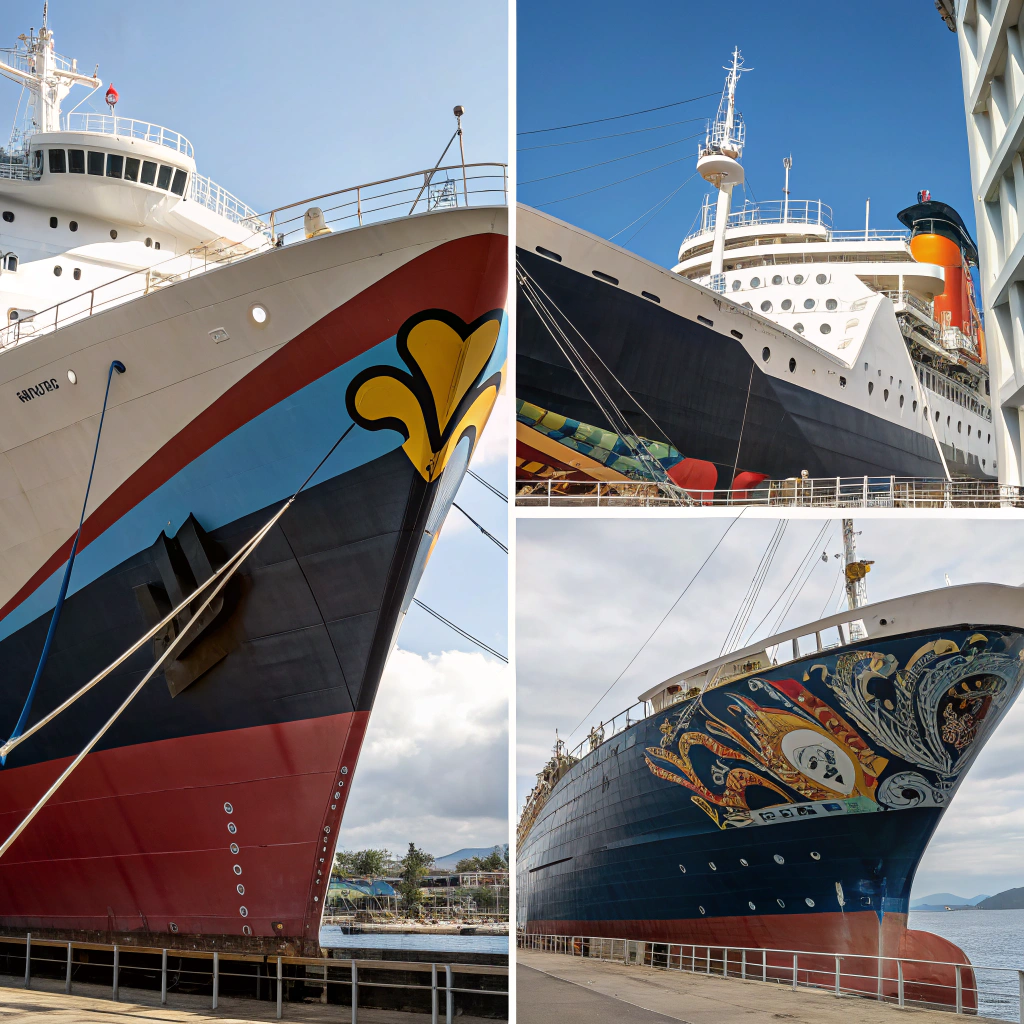
Diving Deeper into Paint Technologies
Modern marine paint suppliers are increasingly focused on innovative technologies to enhance performance and environmental friendliness.
- Self-Polishing Copolymers (SPC) / Ablative Antifouling: These paints gradually wear away, continuously exposing fresh biocides to prevent fouling. Our JD753 Tin-free self-polishing antifouling paint [2] ([10]) utilizes this technology for long-lasting protection.
- Foul Release Technology: These are non-toxic, slick coatings that prevent organisms from firmly attaching, allowing them to be washed off as the vessel moves. An alternative to traditional biocidal antifouling.
- Low-VOC / Waterborne Coatings: Driven by stricter environmental regulations, suppliers are developing paints with lower Volatile Organic Compounds (VOCs) or water-based formulations that are kinder to the environment and safer for applicators. JDmarine is actively developing low VOC emission and even waterborne heavy-duty industrial and marine paints. [6]
- Epoxy Technology: Advancements include high-solids epoxies for thicker, more protective films with fewer coats, and solvent-free epoxies like our JDH825 Solvent-Free Epoxy Tie Coat [5] or JDH836 Solvent-Free Aluminum Iron Epoxy Anti-Rust Paint [12] for specialized applications, reducing solvent emissions.
Understanding this spectrum helps you ask the right questions and select a supplier who can provide the optimal coating system for every part of your vessel, whether it's for a leisure craft or a large commercial vessel. Remember, proper understanding boat surface preparation is also key to paint performance [29], a topic good suppliers will emphasize.
Key Factors to Scrutinize When Choosing Your Marine Paint Supplier?
Problem: With numerous marine paint suppliers in the market, how do you differentiate the good from the great? Simply looking at price or product names isn't enough. You need a robust evaluation framework.
Agitate: Choosing a supplier based on incomplete criteria can lead to significant headaches. You might end up with products that don't perform as expected, face a lack of technical support when issues arise, or struggle with inconsistent supply. This can compromise your vessel's protection, increase long-term costs, and damage your operational efficiency. Don't let a poorly chosen supplier become a weak link in your maritime operations.
Solution: A thorough scrutiny of potential marine paint suppliers should cover several key factors. These include the breadth and quality of their product range, the depth of their technical expertise and support, their reputation and reliability in the market, competitive pricing and value, and their commitment to environmental compliance and innovation. By evaluating suppliers against these criteria, you can identify a partner who truly meets your needs and contributes to your vessel's success.
When evaluating marine paint suppliers, especially in a competitive market like China, several critical factors come into play. These go beyond just the paint itself and encompass the overall value and reliability the supplier brings to your operations.
Here's what to look for:
-
Product Range and Quality:
- Comprehensive Portfolio: Do they offer a full range of marine coatings, including antifouling paints, primers (epoxy, alkyd), topcoats (polyurethane, alkyd, acrylic), and specialty coatings for all parts of your vessel (underwater, topside, deck, tanks)? Look for suppliers who can cater to various vessel types (steel, aluminum, fiberglass, wood) and operational needs.
- Proven Quality & Durability: Seek out suppliers whose products have a track record of performance in real-world marine conditions. This means good adhesion, corrosion protection, UV resistance, gloss retention, and abrasion resistance. At JDmarine Paint, products like our JDH835 Aluminum Iron Epoxy Anti-Rust Paint [12] ([6]) are formulated for tough environments.
- Innovation: Does the supplier invest in R&D to offer modern solutions like low-VOC paints, copper-free antifouling, or advanced self-polishing copolymers? [6]
-
Technical Support and Expertise:
- Knowledgeable Staff: Are their representatives (like myself, Sam, a Technical Consultant) true marine paint specialists? They should be able to provide expert advice on product selection, surface preparation [30], application methods [13], and troubleshooting.
- On-Site Assistance: For larger projects, will they offer on-site technical support or inspections?
- Documentation: Clear technical data sheets, safety data sheets, and application guides are essential. [8]
-
Reputation and Reliability:
- Industry Experience: How long have they been serving the marine industry? Established suppliers often have more refined products and processes. JDmarine Paint (JiangMen JDmarine Paint Co., Ltd) was established in 2017 but builds on extensive expertise. [22]
- Customer Testimonials/Case Studies: Look for positive feedback from other vessel owners or shipyards.
- Supply Chain & Inventory: Can they ensure consistent availability and timely delivery of products? Reliable stock is crucial for minimizing downtime.
-
Pricing and Value:
- Competitive Pricing: While not the only factor, pricing should be competitive. However, the cheapest option is rarely the best value in the long run.
- Cost-Effectiveness: Consider the total cost of ownership – longer-lasting, higher-quality paints might cost more upfront but save money on re-application and maintenance. For instance, a long-life antifouling like JD753 Tin-free self-polishing antifouling paint [2] ([10]) can reduce fuel costs and extend dry-docking intervals.
- Warranty/Guarantees: What kind of assurance do they offer on their products? [16]
-
Environmental Compliance and Sustainability:
- Regulatory Adherence: Do their products comply with local and international environmental regulations (e.g., IMO rules on biocides, VOC limits)?
- Eco-Friendly Options: Do they offer sustainable marine coatings or promote eco-friendly boating practices? This is increasingly important in the marine industry. [6]
![[Image Placeholder: Checklist graphic highlighting key factors: Quality, Support, Reliability, Value, Eco-Compliance.] [Image Placeholder: Checklist graphic highlighting key factors: Quality, Support, Reliability, Value, Eco-Compliance.]](https://jdmarinepaint.com/wp-content/uploads/2025/06/checklist-graphic-highlighting-key-factors-qualit.png)
Making the Right Enquiries
When contacting potential marine coatings suppliers, don't hesitate to ask detailed questions:
- "What is the recommended paint system for my vessel type (e.g., aluminum hull, leisure craft) operating in tropical waters?"
- "Can you provide technical data on the VOC content and biocide release rates for your antifouling paints?"
- "What kind of surface preparation is required for your epoxy primer on a previously painted surface?" [18]
- "Do you offer training or support for our application team?" [25]
- "What are your typical lead times for an order of X quantity?"
A reputable ship paint provider or boat paint supplier will welcome these questions and provide clear, comprehensive answers. Their willingness to engage and share expertise is a good indicator of their commitment to customer service.
Finding the "Best Marine Paint Supplier" for Your Specific Needs (Featuring Top 5 in China)?
Problem: Identifying the "best" marine paint supplier isn't a one-size-fits-all scenario. What works for a large commercial fleet might not be ideal for a small yacht owner. How do you pinpoint the supplier that truly aligns with your specific requirements?
Agitate: Choosing a supplier that isn't a good fit can lead to frustration. You might pay for services you don't need or find their product range doesn't cater to your niche. This mismatch can result in wasted time, overspending, or not getting the specialized support crucial for your vessel's unique challenges, from the type of hull material to its operating environment.
Solution: The "best" marine paint supplier is one whose products, services, expertise, and scale match your specific vessel type, operational patterns, budget, and long-term maintenance goals. This involves self-assessment of your needs and then comparing potential suppliers, including leading Chinese brands, against those needs. A tailored approach ensures a productive and cost-effective partnership.
Finding the ideal marine paint supplier in China requires matching their strengths to your specific operational context. Whether you operate commercial vessels, fishing boats, or leisure craft, your needs will vary. Here, we highlight five noteworthy marine paint suppliers in China, including JDmarine Paint, to give you a starting point.
Top 5 Marine Paint Suppliers in China (Illustrative List):
-
JDmarine Paint (JiangMen JDmarine Paint Co., Ltd)
- Overview: Headquartered in JiangMen, China, JDmarine Paint is a leading provider of high-performance marine coatings designed to protect and optimize maritime assets. We emphasize innovation, quality, and strong technical support. [22]
- Strengths: Comprehensive product range covering alkyds, epoxies, polyurethanes, and antifouling systems. Strong R&D focus on eco-friendly and high-performance coatings like low-VOC options and tin-free self-polishing antifoulings. [6] Dedicated technical consultant team.
- Featured Products:
- Antifouling: JD753 Tin-free self-polishing antifouling paint [2] ([10]), JDL44-83 Bituminous Antifouling Paint [2] ([21])
- Primers: JDH06-4 Epoxy Zinc-Rich Anti-Rust Primer [1], JDC53-35 Aluminum Iron Alkyd Anti-Rust Paint [1] ([9])
- Topcoats: JD918 Acrylic Polyurethane Hull Paint (Yellowing resistance) [5] ([11], [20]), JDC42-32 Alkyd Deck Paint [5] ([3])
- Ideal For: Vessel owners and operators looking for a blend of quality, innovation, and personalized technical service. Suited for a wide range of vessels from commercial ships to leisure craft.
-
Xiamen Sunrui Ship Coating Co., Ltd.
- Overview: Xiamen Sunrui Ship Coating is a high-tech enterprise under China State Shipbuilding Corporation (CSSC). It specializes in research, production, and service of ship coatings, marine engineering coatings, industrial coatings, and architectural coatings. With over 60 years of technical R&D experience and more than 20 years of industry development, it holds numerous patents and has developed national and international standards. The company’s products have passed certifications from major global classification societies including CCS (China), ABS (USA), DNV (Norway), BV (France), LR (UK), and RINA (Italy)
- Strengths: Extensive production capacity, wide distribution network, broad product portfolio catering to various segments. Often chosen for large-scale projects.
- Focus: Ship coatings, industrial heavy-duty anti-corrosion coatings, special functional coatings, architectural coatings. They provide comprehensive anti-corrosion solutions for marine and industrial applications.
- Ideal For: Large shipyards, commercial fleets requiring bulk supply and established product lines.
-
- Overview: Nippon Paint Marine is a global leader in the ship coatings industry with over 140 years of experience. It entered the Chinese market in 1992 and has multiple production bases across China. The company focuses on environmentally friendly and anti-fouling coatings, pioneering innovations such as the world’s first organotin-free hydrolyzable anti-fouling paint developed in 1990. Nippon Paint Marine emphasizes sustainability and advanced marine coating technologies.
- Strengths: Expertise in high-performance antifouling for aggressive fouling conditions, good regional customer support.
- Focus: High-performance marine anti-fouling coatings, anti-corrosion coatings, and environmentally friendly ship paints suitable for various ship areas including ballast tanks and cargo holds.
- Ideal For: Operators in tropical and subtropical waters facing significant biofouling challenges.
-
Shanghai Kinlita Chemical Co., Ltd.
- Overview: Founded in 1993, Shanghai Kinlita is a leading high-performance coatings company listed on the stock exchange. It integrates R&D, production, sales, and service, focusing mainly on automotive coatings but also producing coatings for industrial applications including ship coatings. The company has received multiple industry awards for safety and service excellence.
- Strengths: Experience with coatings for new constructions, specialized tank coatings, and ice-class vessel paints.
- Focus: Cathodic electrophoretic paints, topcoats, ceramic coatings, and coatings used in protection and decoration of vehicles and industrial components, including ship coatings.
- Ideal For: Shipbuilders, owners of specialized commercial vessels.
-
Yutongpaint New Material Co., Ltd.
- Overview: Established in 1994, yutongpaint specializes in chlorinated polyolefin resins used in heavy anti-corrosion coatings, fire-resistant coatings, and ship coatings. The company uses environmentally friendly aqueous suspension chlorination technology and holds ISO 9001:2000 certification. It serves both domestic and international markets.
- Strengths: Wide range of colors for topside paints, user-friendly products for DIY and smaller boatyards, good gloss retention.
- Focus: Chlorinated rubber, high-performance chlorinated polyethylene, chlorinated EVA, used in marine coatings, plastics paints, high-grade adhesives, and printing inks.
- Ideal For: Yacht owners, leisure boat builders, marine chandleries catering to the recreational market.
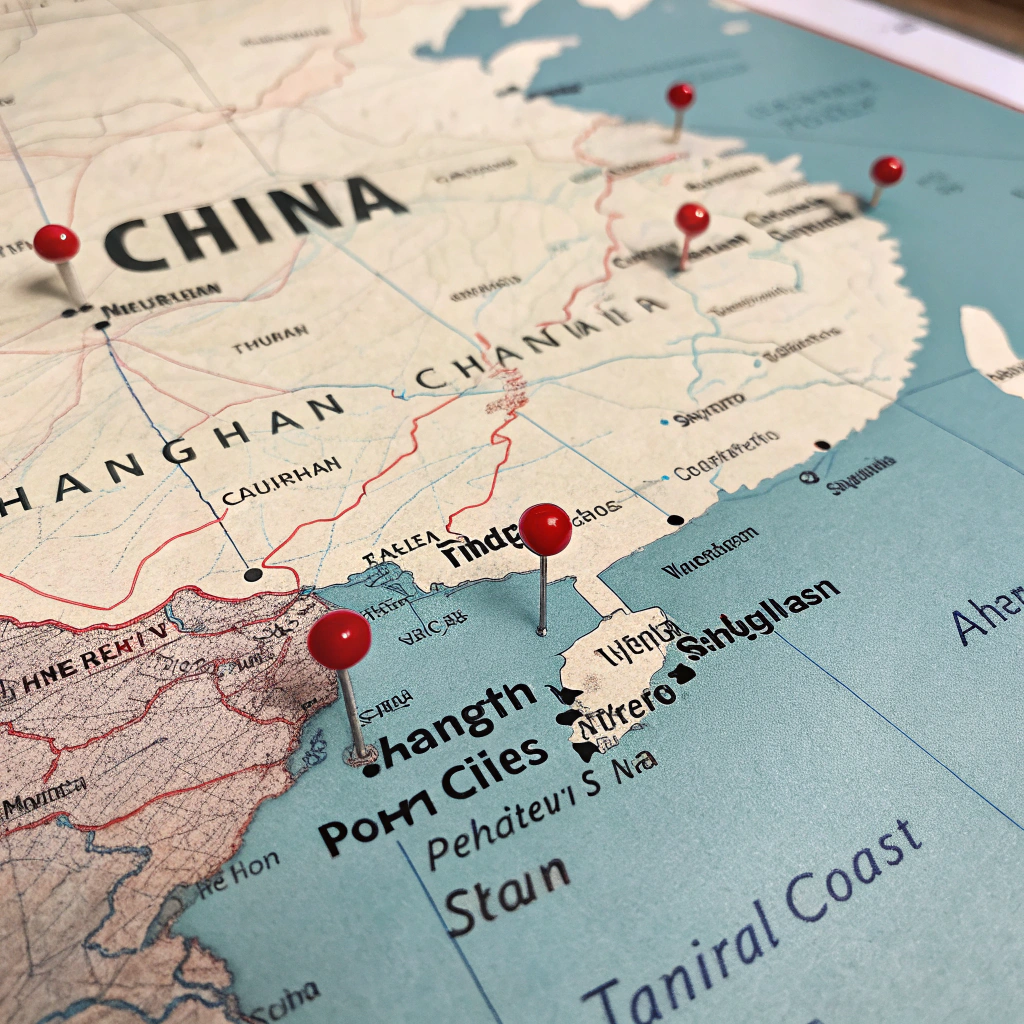
Aligning Supplier Strengths with Your Needs:
To find your "best" marine paint supplier, consider these questions:
- What type of vessel(s) do you operate? (e.g., steel cargo ship, aluminum speedboat, fiberglass yacht, wooden fishing boat)
- Supplier Implication: Some suppliers specialize in coatings for specific substrates or vessel classes.
- What are your primary operational waters? (e.g., saltwater, freshwater, tropical, arctic, high UV exposure)
- Supplier Implication: Requires specific antifouling, UV resistance, or temperature tolerance.
- What is your budget for marine painting? (Premium, mid-range, economy)
- Supplier Implication: Match supplier's price point and value proposition.
- What level of technical support do you require? (Basic product info, detailed consultation, on-site assistance)
- Supplier Implication: Ensure the supplier offers the depth of support you need. For complex projects, a supplier like JDmarine Paint with accessible technical consultants is beneficial.
- Are environmental considerations a high priority? (Low-VOC, copper-free antifouling, sustainable practices)
- Supplier Implication: Seek suppliers with a strong eco-friendly portfolio and commitment.
By conducting this self-assessment, you can better evaluate which of the marine finishes vendors or ship paint providers, including those listed, will be the most suitable partner for your marine coating needs.
Maximizing Your Marine Paint Investment: Tips from Top Suppliers?
Problem: Simply buying quality paint isn't enough to guarantee a long-lasting, protective finish. Without proper planning, surface preparation, and application, even the best marine coatings can fail prematurely. How do you ensure your investment truly pays off?
Agitate: Cutting corners on preparation or application can negate the benefits of premium paint, leading to issues like poor adhesion, blistering, or rapid degradation. This means more frequent, costly repaints, extended vessel downtime, and the frustration of seeing your investment not deliver its full potential. You end up spending more in the long run, both in materials and labor.
Solution: Maximizing your marine paint investment involves a holistic approach. This includes meticulous surface preparation, adherence to the manufacturer’s application guidelines (including film thickness and drying times), choosing the right paint system for the specific substrate and environment, and regular maintenance. Top suppliers emphasize these aspects, as they are crucial for achieving optimal durability, longevity, and performance from their coatings.
Once you’ve chosen a marine paint supplier and selected your products, ensuring you get the maximum value and performance from your investment is key. This involves more than just opening a can and slapping on paint. As technical consultants at JDmarine Paint, we always emphasize that the longevity and effectiveness of a marine coating system depend heavily on several factors:
-
Meticulous Surface Preparation: This is arguably the most critical step. No paint, no matter how advanced, will perform well on a poorly prepared surface. [30]
- Cleaning: Remove all contaminants like oil, grease, salt, dirt, and marine growth.
- Old Paint Removal: Loose, flaking, or incompatible old paint must be removed.
- Abrasion: Creating the correct surface profile (e.g., through sandblasting for steel Sa2.5 [9], or sanding for fiberglass/wood [18]) is essential for good paint adhesion.
- Consult Supplier Guidelines: Always refer to the supplier's technical data sheets for specific surface preparation requirements for each product. For instance, our JDH815 Iron Oxide Red Epoxy Primer [1] specifies surface treatment like blasting to Sa2.5 for steel with mill scale. [8]
-
Correct Paint Application:
- Follow TDS Instructions: Adhere strictly to the Technical Data Sheet for mixing ratios (for two-component paints like epoxies or polyurethanes), recommended application methods (spray, brush, roller [13]), wet/dry film thickness, and recoating intervals. [11]
- Environmental Conditions: Pay attention to temperature, humidity, and dew point during application and curing. Applying paint outside recommended conditions can compromise its properties. [13] For example, do not paint on wet surfaces or during rain. [13]
- Film Thickness: Achieving the specified dry film thickness (DFT) is crucial for protection. Too thin, and it won't protect; too thick, and it can lead to cracking or solvent entrapment. Use a wet film gauge during application. [24]
-
Choosing the Right System:
- Compatibility: Ensure all layers in the paint system (primer, intermediate coats, topcoat) are compatible with each other and the substrate. A good supplier will recommend a complete system. For example, an epoxy primer like JDH818 Rough Surface Epoxy Primer [1] ([12]) is an excellent base for polyurethane topcoats.
- Suitability for Environment: Use products designed for the specific challenges your vessel faces (e.g., high UV, aggressive fouling, abrasion).
-
Proper Curing: Allow coatings to cure fully as per the supplier's instructions before exposing them to service conditions or immersion. [26] Insufficient curing can lead to premature failure.
-
Regular Inspection and Maintenance:
- Periodically inspect coated areas for damage, wear, or early signs of failure.
- Address minor damages promptly to prevent them from escalating.
- Follow the supplier's recommendations for cleaning and maintaining the coated surfaces.
Insider Tips from JDmarine Paint:
- Don't skimp on primer: A high-quality primer is the foundation of a durable paint job. Our range, from JDC53-37 Zinc Grey Alkyd Anti-Rust Paint [1] to advanced epoxies, provides excellent corrosion protection.
- Antifouling application: For antifouling paints like our JD744 Chlorinated Rubber Antifouling Paint [2] ([4]) or JDL44-83 Bituminous Antifouling Paint [2] ([21]), ensure even application and the correct film thickness for the desired service life. Pay attention to high-wear areas.
- Topcoat quality matters for aesthetics and protection: A good polyurethane like JD908 Acrylic Polyurethane Topcoat [5] ([11]) or even a robust alkyd topcoat such as JDC42-31 Alkyd Boottopping Paint [5] ([3]) will provide lasting gloss and color retention, protecting underlying layers.
- Seek expert advice: If in doubt, always consult your marine paint supplier's technical service. At JDmarine Paint, we are here to help you choose the right products (e.g., specific alkyd anti-rust paints like JDC53-36 Iron Red Alkyd Anti-Rust Paint [1] or even specialized coatings like JDC200 Aluminum Alkyd Heat-Resistant Paint [2]) and apply them correctly for optimal results. [25]
By following these guidelines, you can ensure your marine paint not only looks good but also provides the intended protection, maximizing its lifespan and safeguarding your valuable maritime asset.
Conclusion: Partnering with the Best Marine Paint Supplier for Long-Term Success
Choosing the right marine paint supplier in China is vital. A strategic partnership ensures quality products, expert support, and enhanced vessel protection for sustained operational success.
![]()

